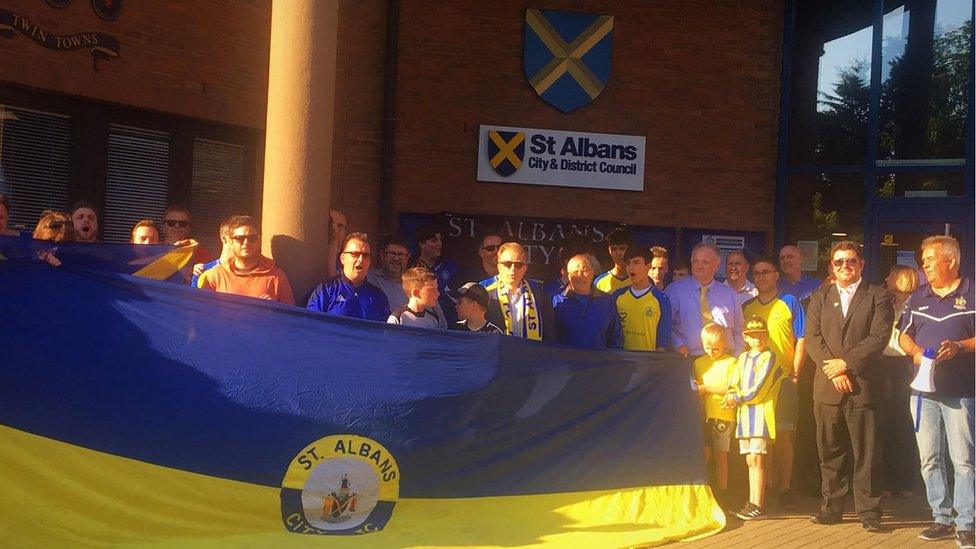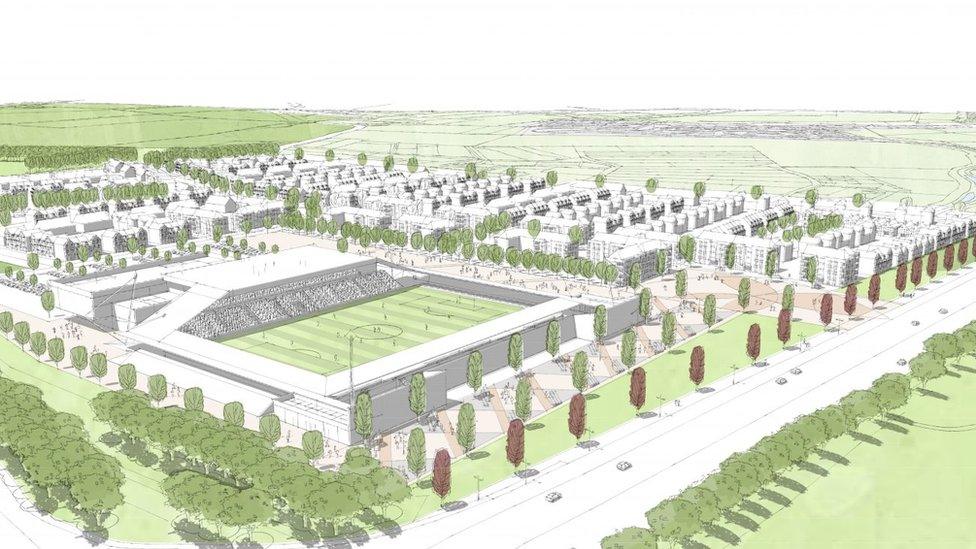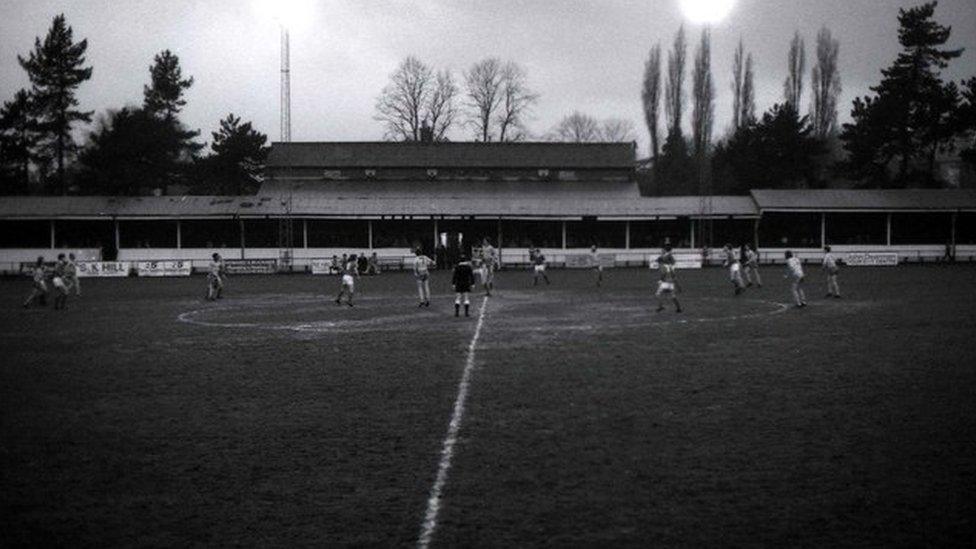St Albans City's new football stadium plan on hold
- Published

St Albans City supporters protested outside the planning meeting
A football club's proposal for a new stadium is on hold after councillors did not include it in their local plan.
St Albans City unveiled the blueprint for the 6,000-capacity ground on green belt land off Noke Lane, close to J21A of the M25, back in March.
The local authority said the stadium, part of a development of housing and business units, would encroach on areas like Bricket Wood and Watford.
The club said without a new ground the owners could not keep funding the club.
St Albans City, of National League South, currently play at Clarence Park, which has been the club's home since formation in 1908.
The ground's capacity is 3,700, but the stadium, in a Victorian park, cannot be developed further.
The proposed development includes a new football ground with conference and banqueting facilities, an academy, a restaurant and a bar.
There will also be a 900-home "village" and business park alongside.

Club co-owner Lawrence Levy said the rest of the community village development is funding the stadium
The plans were developed in partnership with landowner CWC Group, which would fund the stadium as part of the wider project.
After a planning meeting on Tuesday, the council said it did support relocation but on a site that would cause "considerably less harm to the green belt".
'Strengthening case'
It said there were "several alternatives" for the club so it was "strengthening the case for a football stadium" on the local plan.
Portfolio holder for planning at St Albans District Council, Mary Maynard, said: "[This] will give them more opportunity to put forward an individual planning application [in the future]."

What is a local plan?
A local plan sets out local planning policies and identifies how land is used, determining what will be built where
Adopted local plans provide the framework for development across England
People's views shape a local plan, helping determine how their community develops
If a site is in the local plan, planning applications still have to be submitted for each development
Local plans also form the basis for all other planning decisions in an area
Source: Gov.uk

Lawrence Levy said he and co-owner John McGowan had put £1.2m into the club since 2011.
"My only concern is that strengthening the policy to make it criteria-based for us to put a planning application in, must take into account that we require a funding mechanism to actually be able to fund the stadium," he said.
"If [the council] are unable to support us then we can't afford to continue like this."
A final decision on the local plan will be made at a full council meeting in July.

Clarence Park, shown here in 1982, seats about 700 people in a 3,700 capacity ground
- Published29 March 2018
